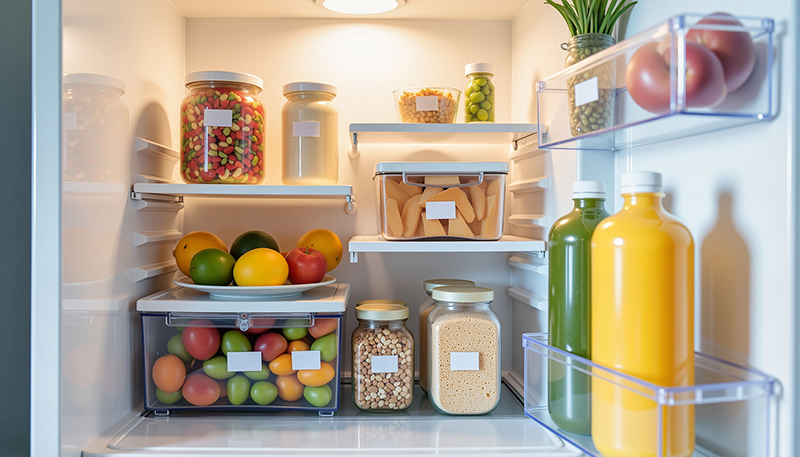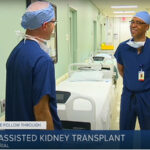 As a kidney health dietitian at Balboa Nephrology I focus a lot of my time educating patients with CKD (chronic kidney disease) on how they can preserve their existing kidney function by eating cleaner. Our kidneys are responsible for cleaning wastes and extra fluid from the body. They also remove acid that is produced by our cells and maintain a healthy balance of water, salts, and minerals—such as sodium, calcium, phosphorus, and potassium—in our blood. If imbalanced, our nerves, muscles, and other tissues may not work normally. Since our kidneys are hard at work for us cleaning our blood (about 200 quarts every 24 hours!), we can lend them a hand by putting less waste-creating foods into our bodies!
As a kidney health dietitian at Balboa Nephrology I focus a lot of my time educating patients with CKD (chronic kidney disease) on how they can preserve their existing kidney function by eating cleaner. Our kidneys are responsible for cleaning wastes and extra fluid from the body. They also remove acid that is produced by our cells and maintain a healthy balance of water, salts, and minerals—such as sodium, calcium, phosphorus, and potassium—in our blood. If imbalanced, our nerves, muscles, and other tissues may not work normally. Since our kidneys are hard at work for us cleaning our blood (about 200 quarts every 24 hours!), we can lend them a hand by putting less waste-creating foods into our bodies!
I bet you’re wondering what clean eating looks like. Read on for some simple steps to spring clean your diet!
- Reduce your protein intake
You’ve likely heard from your nephrologist that to prevent kidney decline you should limit the amount of protein you’re consuming. This is one of the most impactful changes you can make to take care of your kidneys and the reason why is simple. Protein digestion creates a lot of waste in the blood, thereby increasing the workload on the kidneys. The added stress can contribute to the kidneys losing their protein-processing powers. It becomes harder for them to retain protein for your body to use, so more and more comes out in your urine. Give your kidneys a break by planning meals around vegetables and healthy fats, with lean protein and whole grain carbohydrates as sides. If you’re wondering exactly how much protein you need, it depends on a variety of factors. Seek guidance from a registered dietitian nutritionist.
- Swap animal proteins for plant options
Compared with protein from plant sources, animal protein has been associated with an increased risk of kidney disease. This is due to the fact that animal protein creates more acid and wastes in the body, causing the kidneys to work harder. Reduce the burden on your kidneys by opting for beans, lentils, tofu, whole grains, nuts, nut butters and seeds instead.
- Avoid phosphorus additives
If you go to your pantry and start reading ingredients on labels, you may notice words like dipotassium phosphate, calcium phosphate and phosphoric acid, among others. These forms of phosphorus as an additive are highly absorbed by the body, and are found in most processed foods, such as preserved meats, canned and bottled drinks, cereals, and many other ready-to-consume items. Those with CKD cannot remove phosphorus very well, leading to high levels in the blood which can cause damage to the body. Extra phosphorus leads to calcium being pulled out of bones, making them weak. So let’s take time to spring clean our pantries, removing items with “phos” additives! Every time we make the choice to take in less of the compounds that the kidneys have a hard time removing, we’re essentially giving them a chance to last longer 😊
- Minimize naturally occurring phosphorus
Phosphorus is also found naturally occurring in many protein-rich foods such as meat, poultry, fish, nuts, beans and dairy products. Phosphorus found in plant foods is not as absorbed as phosphorus found in animal foods, so don’t let this scare you away from beans and nuts! Keep in mind, we need this mineral for our bodies to function. We just don’t want so much that it builds up in the blood. Just by swapping animal proteins for plant options, phosphorus intake is easily reduced. As far as dairy goes, try switching to unfortified alternatives, such as almond, soy or rice milk, and use cheeses sparingly to add flavor to dishes.
- Limit sodium to 2300 mg a day (or as directed by a physician or registered dietitian)
This is the most common diet advice given for kidney protection since most people with CKD are also managing hypertension, which sodium plays a huge role in. Excess sodium causes the blood to hold on to more fluid, leading to hypertension and strain on the heart AND kidneys. Double whammy. Did you know that most of the sodium in the American diet does not come from the salt shaker? It comes from processed, pre-packaged and restaurant food. Back to spring cleaning our pantries! Be sure to read nutrition labels and choose the No Salt Added or Low Sodium versions, sticking to 200 mg or less sodium per serving. Toss out those that are higher. Use herbs and spice blends instead of sodium-filled condiments while cooking. Try to increase your intake of foods that don’t have nutrition labels at all (veggies and fruit), be mindful of those that do, and eat out less. The more we eat whole, minimally processed foods, the cleaner our diets and the happier our kidneys.











